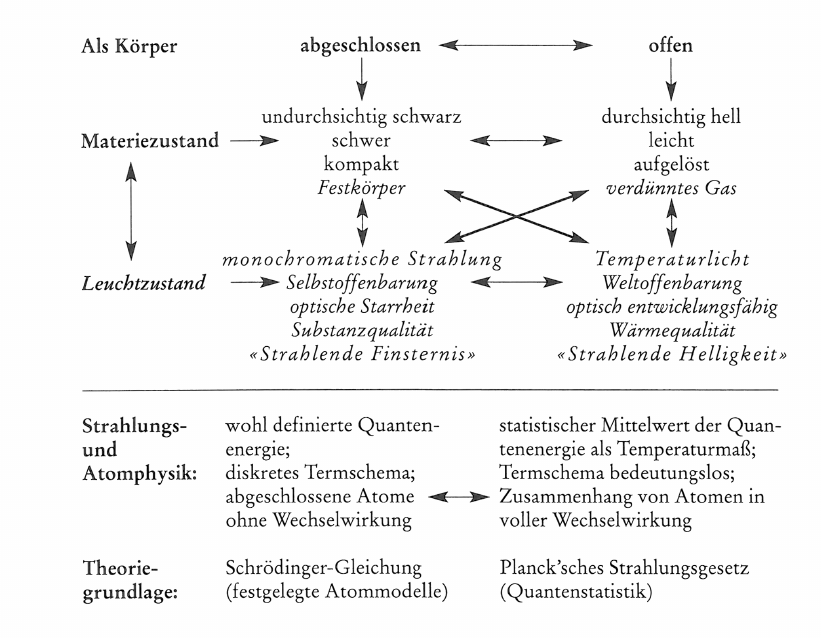Zur Entstehung der Farben
Die Erkenntniswege des «Goetheanismus» und der «modernen Physik»
Export Article Citation as
- Plain text
- BibTeX
- RIS format
- Download price : € 6.00
Abstract:
Through investigating the relation between light and colour, Goethe’s method of natural science is applied to the ”gestures of ideas” of modern research in physics.
In section 1 of this paper an explanation is given in some detail of how the processes of generating coloured light in heated or otherwise excited substances show a twofold polarity in the sense of Goethe, which entirely is in accordance with the “ways of ideas” travelled by modern physics during the 20th century.
Section 2 deals with the origin of colours from colourless light. Considering the ideas of Goethe as well as the investigations of modern physics in their general context, difficulties in understanding prismatic colours by means of Goethe’s “primal phenomenon of a semi-transparent medium” are disappearing. Moreover, all possibilities of generating colours from colourless light can be arranged in a continuous “panorama”, where the results of both current physics and Goethe’s approach to dealing with perception by the human senses harmonize surprisingly well.

